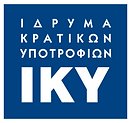Food Groups/Equivalents
A balanced diet involves consuming the right proportions of various nutrients that our bodies need to function optimally, ensuring that we consume a variety of food items.
Here comes the Food groups to help us planning our meals, as different foods within the same group can be substituted for each other while providing similar nutritional benefits!!
So, food groups are categories of foods that share similar nutritional properties and in this webQuest we're going to ecplore them while helping chef Remi and Linghuini to win the "Cooking with Food Equivelants" cooking competition!
Make use of the first 11 slides of the presentation so to discuss about the Main Food Groups:
https://view.genially.com/669a8356127a9d0a8398a9e9

This concept of groups equivelants is based on their macronutrient content (carbohydrates, protein, and fat), helping us understand how different foods fit into a balanced diet and how different foods within the same group can be substituted for each other while providing similar nutritional benefits. This is particularly useful for creating balanced diets and ensuring nutrient diversity, especially when certain foods are unavailable or when dietary preferences and restrictions come into play.
Take a look in the following presentation generated by using Gamma app:
and make a research to check its realibility, and re-edit this by adding or removing content.
Some more usefull articles:
https://www.nia.nih.gov/health/healthy-eating-nutrition-and-diet/healthy-eating-you-age-know-your-food-groups https://www.ncbi.nlm.nih.gov/pmc/articles/PMC3684452/
Then make use of the rest slides of the presentation used for food groups (slides 12-end) so to deep on this concept, accepting a challenge to cook with food equivelants!!Please, help Linguini and Remi by responding correctly to the quizzes!!
The Eatwell Guide shows how much of what we eat overall should come from each food group to achieve a healthy, balanced diet.
You do not need to achieve this balance with every meal, but try to get the balance right over a day or even a week.
https://www.nhs.uk/live-well/eat-well/food-guidelines-and-food-labels/the-eatwell-guide/
For gaining a better understanding of how the concept of food groups is linked to a balanced diet, please take part to the following activity:
Keep a food diary on what you consumed the last day. Make use of the Food Pyramid with food set of templates -if it exists to your school's equipment- or the Eat Well Plate and place the food item that represent what you have eaten (from the set of pyramid or a photo from the web) to the right place on the pyramid (or the Eat Well Plate). Take a photo and post it together with your diary and your comments on what you have developed for your diet in the following padlet:
https://padlet.com/meddiet4health/my-eat-well-plate-63vx9o7w7eyo4x0y
Could you analyze the following recipe so to provide the equivelants included so to calculate the nutrients(gr) it provides?
https://www.recipetineats.com/one-pot-baked-greek-chicken-orzo-risoni/
Duplicate the following worksheet, work based to the instructions and post your findings to the twinboard: https://docs.google.com/document/d/1yTwgqp1xZb_QkIverjN2nKHTgzdmm4-R9Al3Peu1yRc/edit?usp=sharing
OPTIONAL TASK: Organize a "Cooking with food equivelants" workshop at school.





